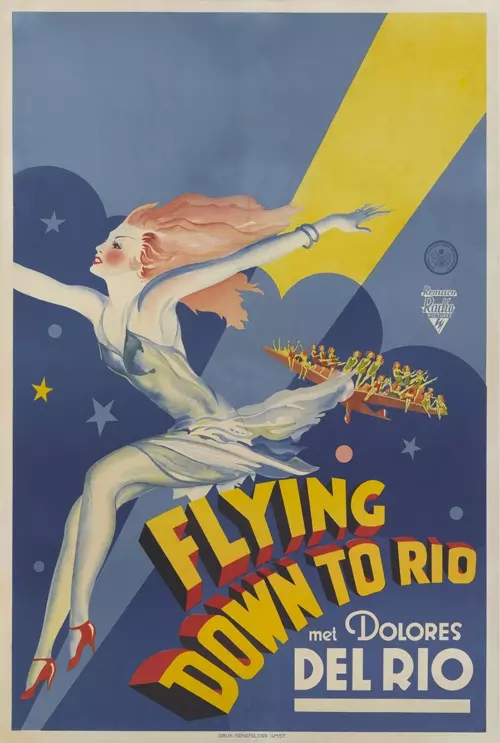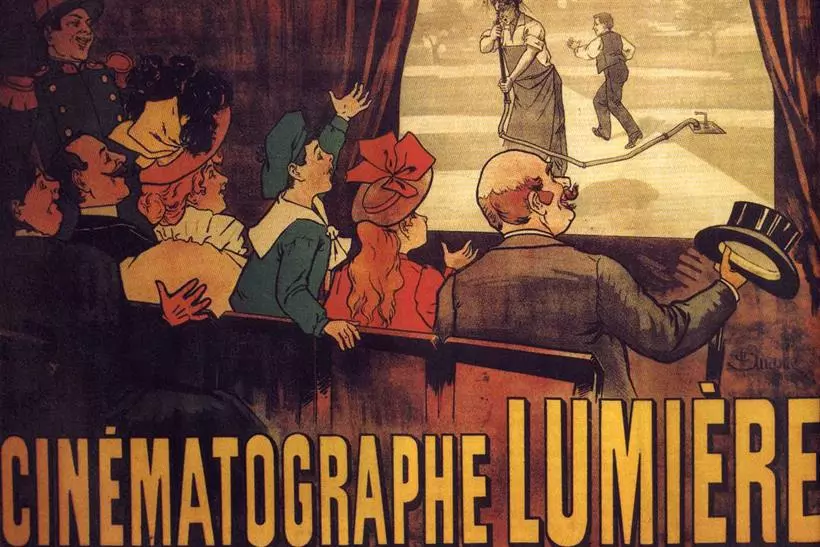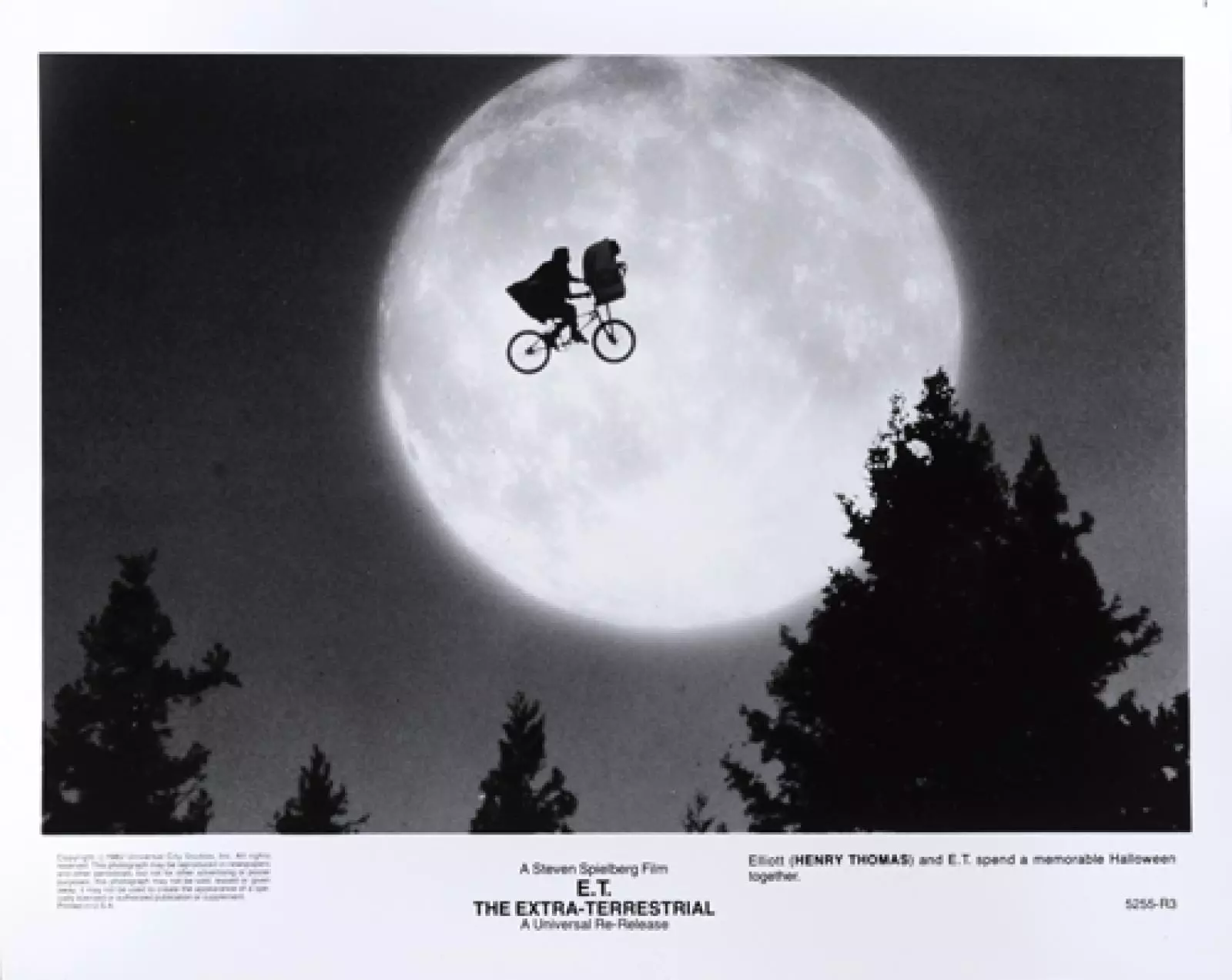When you start collecting movie posters, it is helpful to understand the history of movie posters. Discover the essential information about movie poster origins.
Origin of the Movie Poster
We find the origins of the movie poster in the late 19th century. As technologies advanced and advertising became more and more crucial to business success, poster artists were employed to create striking images to help improve sales.
The first of these artists to create something similar to the movie posters we know today is the French lithographer Jules Cheret. In the 1890s, Cheret created richly designed posters with vibrant colours that would influence dedicated movie poster artists of the future.
As the film industry expanded, production companies and studios began to appreciate the advertising power that striking and colourful posters could have. These initial posters were printed cheaply and were intended to be returned to the studio once the film had finished its run or sent on to the next theatre.
Another form of film advertisement that evolved at this time was the lobby card. These are smaller posters printed on thicker paper and displayed in the lobby of the theatre.
From the 1920s to the mid-20th century, each movie studio developed its own unique style for its movie posters, with each studio hiring dedicated poster artists to create them.
For example, Metro-Goldwyn-Meyer decided on pastel shades on white backgrounds; 20th Century Fox went for brilliant, rich colours to advertise their musicals; Columbia chose to develop a "fake colour" process, where they colourised black and white still photographs. Eventually, Columbia's techniques won out, with every other movie studio copying their designs.
There are very few examples of these Depression-era posters left in circulation.
During the Second World War, many posters were collected by governments as part of resource drives to help the war effort. This means that we only have a handful of copies of posters produced between 1930 -1945.

Before the 1980s, the National Screen Service (NSS) was responsible for printing and distributing movie posters and advertising materials for production studios. However, as cinemas and theatres began to install more and more screens, the need for widely distributed film posters dwindled.
Eventually, the NSS was disbanded, with many poster exchanges being left with hundreds of unused posters. These exchanges then changed tack, realising a market for collectors, and they began selling these movie posters directly to them.
Today, many movie studios are choosing to target the majority of their advertising online. This means that film posters are increasingly rare, boosting their collectability. And with greater interest comes greater prices, meaning that some rare vintage film posters have been known to sell at auction for hundreds of thousands of dollars.
What was the first Movie Poster Ever Produced?
While the designs of Jules Cheret are thought to be the inspiration for later movie posters, the first dedicated movie poster ever created was produced by another French artist named Marcellin Auzolle.
This poster was made to advertise the 1895 short film "L’Arroseur Arrosé" by the famous Lumière brothers.
This is considered to be the first movie poster ever made for a specific reason. While decorative movie posters had been produced as advertising since 1890, Auzolle broke the mould with this poster.
Earlier designs focussed mainly on celebrating the quality of the films they advertised or promoted the technological innovations used to create them. Auzolle's poster, on the other hand, depicts a cinema audience watching and laughing as the film is projected in the background.
This makes it the first movie poster actually to depict a scene from the film it is advertising.


Evolution of Movie Posters
Despite the history of movie posters covering over 100 years, the initial purpose of the movie poster has not changed. They are still used to generate excitement and advertise the joys of watching movies, ultimately aiming to get as many tickets sold as they possibly can.
However, before more modern digital advertising possibilities, each part of a film poster was designed explicitly to celebrate the movie's most iconic scenes and trade on the celebrity of their film star cast.
Aside from being prime examples of how advertising, art and design can come together to create unique pieces of art, they can also offer us valuable insights into history.
They can show us the historical trends of design, clothing and fashion and even the politics of the era in which they were produced. While technology has advanced and traditional movie posters have become obsolete, there is no denying their integral role in our understanding of design and how they have played a significant role in developing the movie advertisements we know today.
Early movie posters
Before any form of digital mass communication, or other forms of mass advertising such as television, were available, movie posters were often the only way a studio could promote their new films to the general public.
Following Marcellin Auzolle, movie posters of the 1910s focussed mainly on depictions of specific scenes from the movies they advertised. However, the text of the posters became much smaller, resembling the front cover of a magazine or novel, with the graphic design taking precedence. Some European posters demonstrated excellent artistic quality, promoting films through beautifully designed abstract posters.
The 1920s - 1930s
In terms of illustration and graphic design, the film posters of the 1920s turned to more figurative methods, with depicted scenes presented more straightforwardly.
The bold and brightly coloured text remained within its own distinct zone of the poster while the scene depictions took centre stage.
As posters progressed through the 1930s, the title of the movie and the design of the images began to blend, with typography becoming just as much of an art as the images.
The 1940s - 1950s
As the 1940s rolled around, depictions of movie scenes began to give way to portraits of movie characters.
Film stars were becoming more and more recognisable, and figures such as Humphrey Bogart, Lauren Bacall, Cary Grant and Veronica Lake were all the studios needed to pull in crowds of cinema lovers.
The text in the posters continued to become increasingly aesthetic, becoming part of the story and subtly hinting at the film's plot.
The 1960s - 1970s
Moving into the second half of the 20th century, we find that typography's journey from function to art is not yet finished.
Austerity and seriousness have gone out of the window, and the movie posters of the 1960s and 70s prefer quirkier, crazier and more stylistic designs.
Thinking of films such as West Side Story, you will realise how the text of a movie poster gradually transitioned to become the poster itself.
The 1970s - 1980s
Posters of the 1970s brought back an element of balance in the battle between text and graphics. A return to character illustrations and plot suggestions denoted a dramatic change from the swinging sixties.
The most profound variation, however, is found in movie posters of the 1980s. This is where we find photographs making their way to prominence in movie artwork.
Iconic films such as Terminator, The Breakfast Club and Blade Runner all took advantage of the photographic boom, once more relegating typography to the edges of the poster.
Movie Posters Of THe 1990s Till Today
The 1990s brought greater technological innovations than previous decades regarding movie poster design.
Digital editing software allowed designers unlimited freedom with artistic creativity, creating anything they could imagine. However, they may have lost their sense of subtlety in the process. Take Titanic, for example.
The poster for this 90s classic essentially tells you the entire story, with the two lovers of Di Caprio and Winslet embracing over an image of a big ship; you essentially know what you're in for. But with an unlimited number of effects at designers' fingertips, there is no ceiling to the possibilities of future movie posters.

Original Vintage Movie Posters for Sale
We created this website to provide a vintage movie poster guide. If you have an interest in classic movie posters from the 1950s, 1960s or 1980s, we hope you will learn more about the most popular posters of the period.
Take a sneak peak at some of the posters we have in stock here. However, if you have a film in mind and don't see it here, please get in touch as we'd be happy to locate it for you.
Are you interested in movie poster collecting? We hope you have gained useful information from this article discussing: A History Of Movie Posters? Follow the links below to discover more about collectable movie posters.

